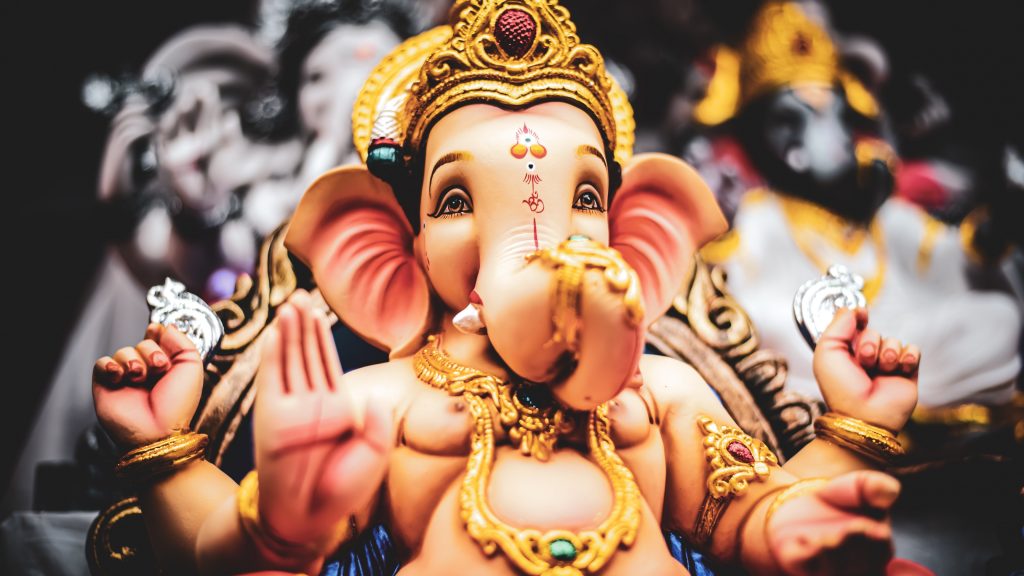Introduction
Ganesha, the elephant-headed deity, stands as an iconic and beloved figure in Hinduism and beyond. His distinctive form, replete with intricate symbolism, tells a story of mythology, spirituality, and cultural significance. In the tradition of Hindu deities, Ganesha holds a unique place, celebrated not only as the Remover of Obstacles but also as the Lord of Beginnings and the Patron of the Arts and Sciences. As we explore on this journey into the iconography of Ganesha, we are led into a world where the visual representation transcends mere artistry and takes on a spiritual, cultural, and philosophical dimension.
To truly appreciate the iconography of Ganesha, we must first explore the historical and mythological context that underpins his origin and evolution. Ganesha’s stories, often steeped in legend and folklore, offer a glimpse into the diverse tradition of Hindu mythology. From his curious birth involving the creative prowess of Goddess Parvati to his iconic elephant head, each facet of his narrative carries profound teachings and allegories.
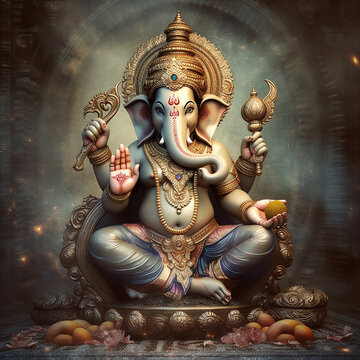
As we look deeper, we will dissect Ganesha’s physical attributes, examining the intricate details that define his visual representation. His distinctive elephant head, potbelly, multiple arms, and elaborate accessories like the broken tusk and serpent are not arbitrary elements but hold deep symbolism. Every aspect of Ganesha’s form has a story to tell, conveying layers of meaning and offering guidance to those who seek it.
Mudras, or hand gestures, are a significant part of Ganesha’s iconography, and they are replete with blessings, wisdom, and guidance. Each gesture tells a story of compassion, protection, and divine wisdom, serving as a visual language that communicates directly with the heart of the devotee.
Intriguingly, Ganesha’s symbolism extends beyond his physical form. His rich colour palette, often depicted in hues of red or yellow, carries meaning. His postures, whether in a meditative or dancing pose, convey a sense of divine grace and balance. These subtleties reveal the deity’s multifaceted character and his role as a source of inspiration for meditation and spiritual growth.
Moreover, Ganesha’s iconography is not confined to a singular form; it blossoms into diverse regional expressions across the vast expanse of the Indian subcontinent. Each region, culture, and community lends its unique interpretation to Ganesha’s image, weaving a tapestry of diversity and unity. Understanding these regional variations provides a window into the cultural richness of India and its deep-rooted traditions.

Beyond the sacred realm, Ganesha’s iconic presence permeates contemporary society, where he continues to inspire artists, fashion designers, and creators across the globe. His image graces art exhibitions, fashion runways, and even the silver screen, showcasing the deity’s enduring relevance in the modern world.
As we embark on this journey through the iconography of Ganesha, we will uncover the stories, symbols, and significance that have made him a timeless and universal symbol of wisdom, prosperity, and the divine. Each facet of his image will unveil layers of meaning, inviting us to contemplate not only the deity himself but also the profound teachings and cultural connections that his iconography embodies. Ganesha’s image is more than a form; it is a portal to understanding the depths of Hindu spirituality and the vibrant tapestry of India’s cultural heritage.
Historical and Mythological Background
Historical Evolution of Ganesha: Ganesha’s history is a matrix woven with threads of ancient texts, religious folklore, and cultural evolution. His origins are often traced to the rich Vedic period of ancient India, although he has undergone significant transformations over the millennia. In these early texts, he was known as “Ganapati” or the Lord of the Ganas, a group of semi-divine beings who served Lord Shiva.
The early references to Ganesha can be found in texts like the Rigveda and Atharvaveda, where he was invoked for blessings and the removal of obstacles. However, his characterisation during this period is different from the familiar elephant-headed deity we recognise today. Ganesha’s journey from being a minor deity in the Vedic pantheon to becoming a prominent figure in Hinduism is a fascinating study in itself.
Mythological Stories: Central to Ganesha’s mythological narrative is his unique birth story. According to the most popular version, Goddess Parvati, Shiva’s consort, created Ganesha from the dirt of her body while she was bathing. She imbued life into this form and appointed Ganesha as her guardian. When Lord Shiva, returning home, encountered the newly created guardian at the doorstep, he was denied entry, leading to a confrontation in which Ganesha’s head was severed. In an act of mercy and love, Shiva replaced the head with that of an elephant, giving birth to the iconic elephant-headed Ganesha.
This narrative carries profound lessons, emphasising the importance of respect for all beings and the maternal love of Goddess Parvati. It teaches us that obstacles and challenges in life can be transformed into blessings through divine intervention.
As Ganesha evolved, he took on various roles and attributes. His role as “Vighnaharta,” the Remover of Obstacles, became central in Hindu worship. Devotees began invoking him at the start of new endeavors, seeking his blessings to overcome challenges and impediments.
Symbolism in the Mythology: The symbolism in these stories is rich and multifaceted. Ganesha’s elephant head signifies wisdom and intelligence, reminding us that true knowledge transcends physical appearances. His potbelly symbolises the ability to digest life’s experiences, both pleasant and challenging. The broken tusk represents sacrifice for the greater good and the need to overcome ego. His association with mice and serpents speaks to his mastery over all creatures, no matter how small or large.
Furthermore, Ganesha’s relationship with his parents, Shiva and Parvati, reflects familial love and devotion, emphasising the importance of these values in Hindu culture.
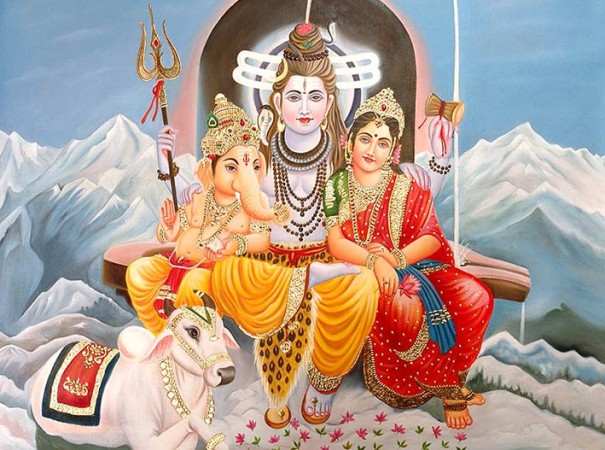
Understanding the historical and mythological background of Ganesha provides a solid foundation for appreciating the intricacies of his iconography. It invites us to explore the layers of symbolism in his form and the profound teachings embedded in his stories. As we continue our journey into the iconography of Ganesha, let us keep these foundational narratives in mind, recognising how they have shaped the deity’s visual representation and spiritual significance over the ages.
Physical Attributes of Ganesha
Distinctive Physical Features: Ganesha’s visual representation is instantly recognizable due to his distinctive physical attributes. At the forefront is his elephant head, which is the most defining feature. This elephant head is often depicted with large, floppy ears and a gentle, compassionate expression. It is symbolic of wisdom, strength, and intelligence. It reminds devotees that knowledge is a crucial tool for navigating life’s challenges, and it encourages us to approach difficulties with intellect and discernment.

Ganesha’s elephant head also embodies the concept of “Gaja,” the Sanskrit word for elephant, which is associated with prosperity, abundance, and royalty in Hindu culture. Thus, Ganesha’s elephant head signifies not only wisdom but also the promise of material and spiritual wealth.
Potbelly and Multiple Arms: Another prominent feature of Ganesha is his potbelly, which has a unique symbolic significance. It represents his capacity to digest both the sweet and sour experiences of life. Just as he is known for removing obstacles, Ganesha also teaches us to assimilate all that life offers, whether pleasant or challenging, and transform it into positive energy.
Ganesha is often depicted with multiple arms, typically four or six, each holding different objects or gestures (mudras). These arms symbolize his omnipotence and omnipresence. They signify his ability to accomplish multiple tasks and offer blessings simultaneously. Each hand gesture carries its own meaning, and we will explore these mudras in more detail in a later section.
Accessories and Symbols: Ganesha’s iconography is adorned with various accessories and symbols that add depth to his representation. One of the most recognisable symbols is the broken tusk. According to mythology, Ganesha broke one of his tusks to use as a writing tool when transcribing the Mahabharata, an ancient Indian epic. This symbolizes sacrifice for the greater good and the idea that one should be willing to let go of personal attachments for the betterment of others. It also underscores the importance of creativity and knowledge.
Another common accessory is the serpent, often depicted as a garland around Ganesha’s neck or as a sacred thread across his torso. The serpent symbolises his mastery over primal forces, including the ego. It serves as a reminder to conquer one’s inner demons and desires.
Additionally, Ganesha is sometimes depicted with a crescent moon on his head, either as a tiara or an ornamental feature. This moon symbolises the passing of time and the continuous cycle of creation and destruction. It signifies the divine control over the universe and reinforces Ganesha’s role as a deity who governs the course of destiny.
Symbolic Interpretation: Understanding the physical attributes of Ganesha goes beyond mere aesthetics. Each aspect of his form carries profound symbolic meanings that convey valuable life lessons and spiritual teachings. His elephant head, potbelly, multiple arms, and symbolic accessories collectively create a visual language that speaks to the core of human existence. They inspire devotees to seek wisdom, practice humility, embrace life’s challenges, and strive for spiritual growth.
As we explore Ganesha’s iconography further, it becomes evident that every element of his physical representation serves as a reminder of the divine qualities and life lessons that he embodies. These attributes invite us to contemplate not only his form but also the deeper philosophical and spiritual truths they represent.
Hand Gestures (Mudras) of Ganesha
Abhaya Mudra (Blessing Gesture): One of the most commonly seen mudras in Ganesha’s iconography is the Abhaya mudra. In this gesture, Ganesha’s right hand is raised with the palm facing outward, offering a gesture of fearlessness and protection to his devotees. It symbolises his role as the remover of obstacles and his willingness to dispel the fears and concerns of those who seek his blessings. The Abhaya mudra encourages devotees to approach life with courage and without fear, trusting in Ganesha’s guidance and protection.
![Brass Ganesh Statue in Abhaya Mudra with Trident Tilak on Trunk Decorated with Colored Stones 20 inc [Indian God Statue]](https://dtribals.com/portal/images/product_images/273_2_1-brass-ganesh-with-stones.jpg)

Modakapatra Mudra (Holding a Sweet Gesture): Ganesha is frequently shown holding a modaka (a sweet delicacy) in his left hand, known as the Modakapatra mudra. The modaka is a symbol of the sweet rewards of life that come to those who follow a righteous path. It represents the sweetness of knowledge, wisdom, and spiritual realization. This mudra encourages devotees to seek the higher, sweeter aspects of existence and reminds them that Ganesha is the bestower of these blessings.

Katyavalambita Mudra (Leaning on One Hand Gesture): In this mudra, Ganesha is often depicted leaning on his left hand, with one leg folded and the other resting on the ground. This posture symbolizes relaxation and contentment. It conveys the idea that one can remain steady and poised, even in the face of life’s challenges. It encourages devotees to find inner peace and maintain a calm demeanor, knowing that Ganesha is there to support them.
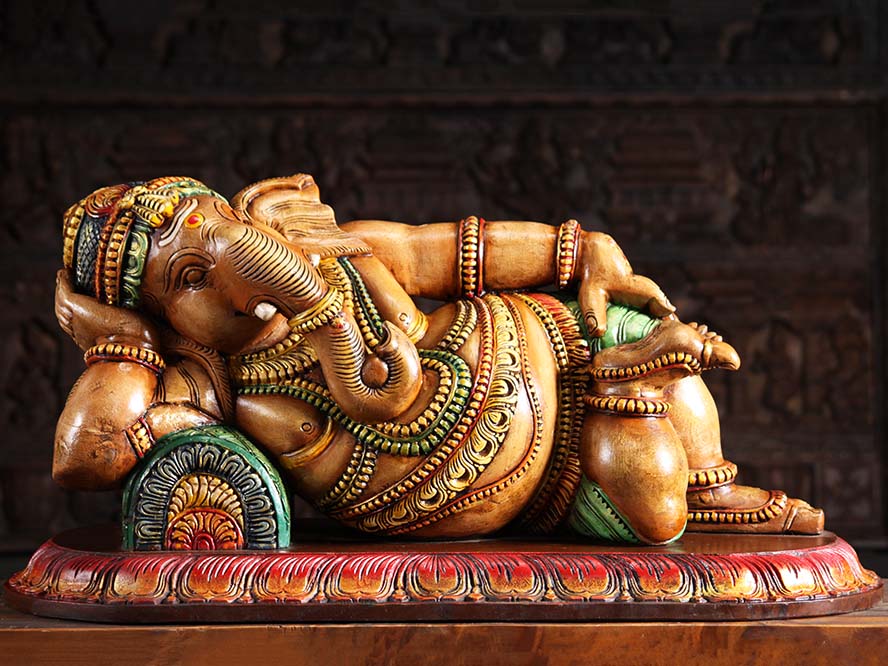
Vijaya Mudra (Victory Gesture): The Vijaya mudra is a sign of Ganesha’s triumph over obstacles and challenges. In this gesture, Ganesha’s right hand is raised with the palm facing outward, while his left hand holds a noose. The raised hand signifies victory, while the noose represents his ability to capture and overcome life’s difficulties. This mudra inspires devotees to approach challenges with confidence and determination, knowing that they can conquer them with Ganesha’s blessings.

Musical Instruments and Implements: In addition to the primary mudras, Ganesha is also depicted holding various musical instruments and implements in his hands. These include the damaru (a small drum), the axe, the rosary, and the lotus. Each of these objects carries its own symbolic significance. For example, the damaru represents the rhythm of life and creation, while the axe symbolizes the cutting of attachments and delusions. These instruments and implements remind devotees of Ganesha’s multifaceted nature and his ability to guide them in various aspects of life.
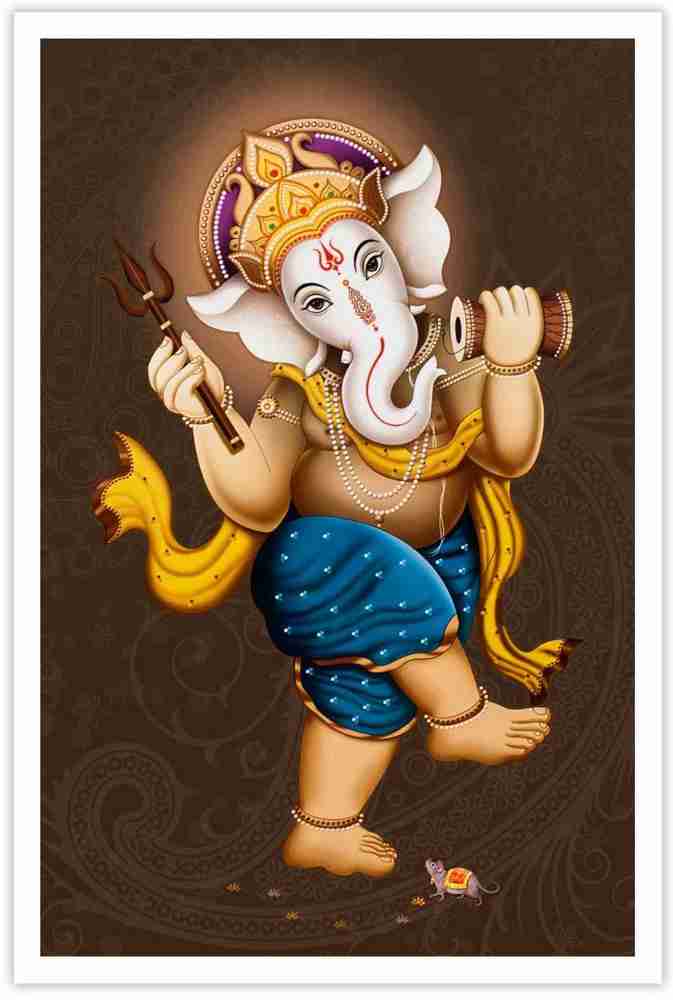
Ganesha’s mudras serve as a visual language that communicates his blessings, teachings, and qualities to his devotees. Each gesture invites contemplation and reflection, encouraging individuals to embrace the values and wisdom embodied by Ganesha. As we explore Ganesha’s iconography, it becomes evident that his hand gestures are not merely artistic elements but profound expressions of spiritual guidance and encouragement.

Contributor

